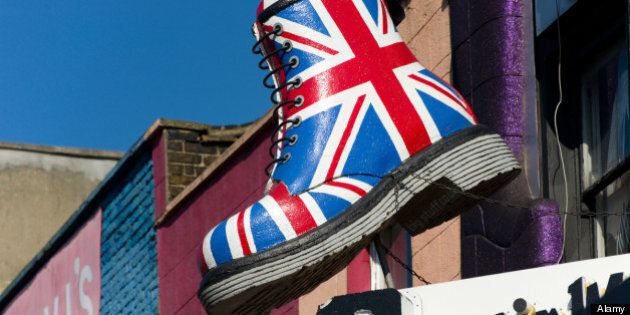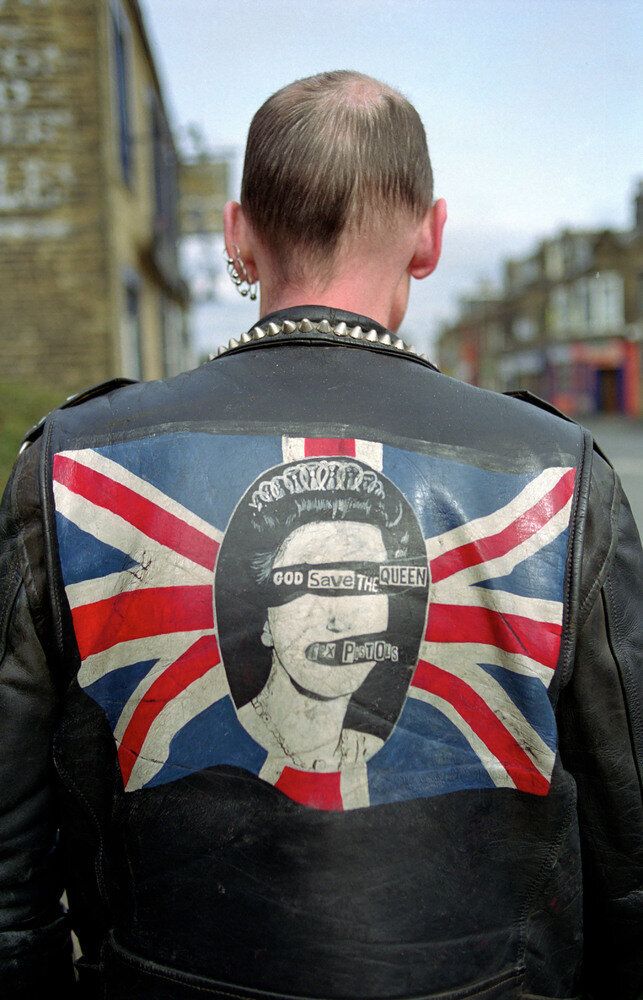
This year, British clothing company Ted Baker London celebrates its 25th anniversary, and with it comes the rich textures, fabrics, and innately English aesthetic that have defined the brand since its inception.
To celebrate, we’ve channeled (and fine, romanticized) the best and brightest of British fashion trends to commemorate the styles we’ve seen injected into North American culture.
Just don’t blame us if you book a flight across the Atlantic once you’re done clicking through.
Story continues below the slideshow:
1. Punk
Thanks to the Vivienne Westwood/Malcolm McLaren-run shop, Sex (which underwent several name changes throughout its history), the leather-dictated, S&M-inspired looks of the original punk movement came to pass. With distressed, safety and patch-ridden styles abounding, bands like the Sex Pistols brought the looks to prominence along with their music from the ‘70s onward, immortalizing the genre for decades to come.
2. Trench Coats
Well, is anyone really surprised? While brands Burberry and Aquascutum have both been credited with the creation of this iconic piece (Aquascutum claims to have invented it in the 1850s), the official “trench coat” technically belongs to Burberry after the military adopted the style following Thomas Burberry’s design for the War Office in 1901. From there – and following the First World War – it went mainstream, becoming a huge component of the traditional British aesthetic.
3. Wellies
In a country as famous for its rain as its fashion trademarks, wellies are no doubt the go-to rain boot which got its start across the pond. After being adopted by Arthur Wellington, 1st Duke of Wellington, for outdoor purposes in the 18th century, the style evolved (as styles do), and found itself a go-to for the British public following the Second World War. Green continues to be the most popular colour; it was introduced by Hunter’s (another English company, that we still wear today) in 1955.
4. Miniskirts
We have British designer Mary Quant to thank for shortening hemlines in the 1960s, as Carnaby Street’s mod haven became an integral part of the British Invasion. Soon, along with The Beatles and The Who, the controversial, above-the-knee style found its way to North America, only to become an indelible mark on our cultural fibers.
5. Chelsea Boots
Everything old is new again, with proof being the resurgence of Chelsea Boots over the last few years. Popularized by The Beatles during their rise to fame, the ankle boots were actually introduced in the Victoria Era by Queen Victoria’s boot maker. Their target consumer? Larger Victorian women who didn’t want to crouch down to lace up traditional boot styles.
5. Kinky Boots
The next generation of Mary Quant’s go-go boots, more dominatrix-inspired, over-the-thigh “kinky boots” asserted themselves via popular culture thanks to the likes of Diana Rigg on the British TV show "The Avengers". However, in addition to grabbing attention, they also had a practical factor: despite the “fetish” associations, they balanced the shorter hemlines of the mid-to-late ‘60s, making a style less exhibitionist.
6. Edwardian
Just because something’s more than a century old doesn’t mean it won’t resonate many decades later. Case in point: Edwardian collars, which resurfaced in the ‘60s and ‘70s after their introduction in the early 1900s. High, lace collars worked with short skirts and dresses (or even as part of pant suits as worn by Mary Tyler Moore), and have resurfaced again thanks to the popular British TV series "Downton Abbey" and their upcoming fashion & home line.
7. Skinny Jeans
While Jane Shepherdson, chief executive of Whistles, credited the punk movement with the initial introduction of skinny jeans, it was at her position as brand manager of Topshop that saw her introduce the Baxter style in 2005 – a low-rise, slim fitting cut – that furthered the trend’s relevance. A report by The Guardian furthers the British/skinny jean connection, dating back to the mid-18th century and a group called the Macaronis, who were “the first British fashion movement to be subversive.” And you thought they were just pants.
8. Dr. Marten’s
After the first pair of Dr. Marten’s boots was launched on High Street in 1960, it took only a few years before they were adopted by youth culture as part of the punk and grunge movements. Now, they’re a far cry from the trademark black style of the original look: Docs now collaborate with everyone from designers to celebrities, offering bright colours, bold prints, and various other styles as a means of self expression.
9. Oxfords
Now a massive part of fashion culture, oxford shoes were first seen in Ireland and Scotland before making their way to the U.S. Formerly called Balmorals (thanks to the Queen’s castle in Balmoral, Scotland), they earned their current name from their resemblance to the once-popular “Oxonian” shoe that was a must-have at Oxford University in 1800. Retro.
10. Tweed
It’s not Fashion Week without tweed, and we have England to thank for that. Worn previously in the Edwardian era as outdoor gear, the fabric was previously known as “tweel,” but was coined as “tweed” thanks to illegible handwriting on an order form that led to it being advertised as such. And the rest is history.
11. Mod
Mini-skirts and go-go boots may have helped make the ‘60s mod movement accessible, but it was the brightly coloured tights, colour blocking, and PVC styles that also helped catapult the movement to the mainstream. On men, it was equally eye-catching: with Teddy Boys opting for fabrics like velvet, prints like paisley, and slim, well-fitted suits, the looks epitomized a rebellious and fashion-conscious generation who still influence us today.
12. “The Waif”
True, models aren’t fashion trends, but the impact of people like Twiggy and Kate Moss is worth mentioning. While Twiggy brought a face to the mod movement via bright colours and a new shape, Kate Moss toned it down a notch and appealed to the grunge aesthetic, combining the hardness of the ‘90s with the glamour of fashion.
13. Scarves
Yes, scarves played a role in almost every country throughout history, but the popularization of scarves via Queen Victoria, and the introduction of the Burberry scarves (with the iconic plaid print) in 1856 is worth noting. (Especially since they were used as a status symbol.) Now, they may not carry the same weight, but thanks to the resurgence of accessories – and vintage influences – don’t be surprised to see the scarf flag flown again.
14. Satchels
All right, we admit it, satchels have been around longer than any official fashion house on earth – but what kind of a British list would this be if we didn’t include this iconic trend? Mulberry’s range of fishing and sporting-inspired gear has kept the label on the map since its 1970s creation, with its selection of satchels embodying both England’s country feel, and history of sturdy, countable (and iconic) pieces.
